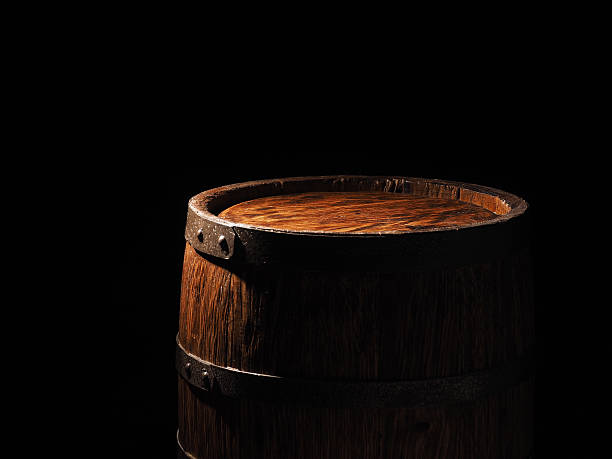People frequently ask us what’s the value of their cask will be in five, ten, and fifteen years, but we are unable to forecast this.

Even Warren Buffett, who is usually regarded as one of the most successful investors in the world, does not make stock price forecasts. Ultimately, a forecast is nothing more than an informed guess, and we are not in the business of guessing. However, we can provide you with information on the past and historical performance of casks that our customers have purchased and subsequently sold, which you may then use to determine whether or not the investment is right for you.
Examples of cask value change in practice
We will examine examples from Bruichladdich, Springbank, The Macallan, and Tobermory. These are barrels that we have routinely sold and that have seen varying cask value trajectories.
Bruichladdich
Bruichladdich casks were made available to the public shortly after the distillery reopened in the early 2000s. Bruichladdich did this between 2002 and 2012 in order to create short-term money to support the distillery. The private cask ownership program ended immediately before to the sale of the distillery to Rémy Cointreau.
Bruichladdich hogsheads may be acquired for roughly £1,500 in the middle of the 2000s; their current value ranges from £7,500 to £15,000 depending on cask type and remaining litres of whisky.
Invest strategically: Purchase the following Macallan Whisky
Springbank
When Springbank reopened in the 1990s, they marketed a cask ownership program as a means of generating short-term revenue while their fresh stock matured. Throughout the 1990s, Springbank bottles carried leaflets urging consumers to purchase casks. From 1991 through the year 2000, barrels were available.
In the year 2000, a hogshead of Springbank would have cost around £1,500, however a 2000 cask of Springbank is now valued between £30,000 and £60,000, depending on cask size, barrel type, and remaining litres of whisky.
Exterior appearance of Macallan distillery
Whisky Macallan
In the late 1990s, Macallan barrels were accessible through Cavendish wines, a London-based broker. These barrels were significantly older than the previous two, and in 1996, a cask of 1990 Macallan could be purchased for around £3,000; this was slightly more than the others (and actually there is a longer story there, but as you will see below it has a happy ending).
The value of a cask of The Macallan 1990 ranges between £150,000 and £200,000, depending on cask size, barrel type, and remaining litres of whisky.
This Macallan sample is 10-15 years older than the preceding specimens from Bruichaldich and Springbank; hence, we have included a Tobermory example for a more direct comparison.
Tobermory
Cavendish wines also sold Tobermory barrels of same vintage to the Macallan casks, between 1990 and 1995, for around £1,500 per cask.
Tobermory barrels of comparable age to the Macallan sample above are valued between £10,000 and £15,000.
Dalmore 180th Anniversary whisky bottle
Age versus brand
The essential lesson from the preceding instances, and the reason why we should not make forecasts, is that the future value might vary substantially, and that the whisky’s age is not the primary driver of its worth.
The Bruchalddich and Springbank barrels are of equal age, although their prices are much different. This distinction is considerably more pronounced between Tobermory and Macallan casks.
Branding and market position are the primary determinants of price differences; the distillery’s investment in its brand and the public’s opinion of that brand’s value ultimately determine how much someone is prepared to pay for a bottle and, by extension, a cask from that distillery.
Only people within these distilleries are aware of their precise marketing expenditures and business strategies. We cannot anticipate which distilleries will invest in their brand. And even if we did know, we would not be able to predict its success.
What we can and do look for are indicators of potential future investment in a distillery and its brand. Brand owners like as Diageo, Edrington, Pernod Ricard, Beam Suntory, etc. have enormous resources and distribution networks, allowing them to reposition and relocate brands with relative ease.
In 2018, Beam Suntory and Edrington formed a joint venture that merged their marketing and distribution efforts. Therefore, if you possess a cask of whisky from a distillery controlled by Beam Suntory or Edrington, you have access to the same distribution and marketing network as Macallan.
These are the types of signs we look for while assisting you in purchasing a barrel of whisky: We consider the brand’s parent firms and what they have done in the past, as well as the success of other brands owned by the same parent companies. In addition, we search for indicators that imply a possible repositioning of the brand, as well as signs that the brand is now in wide circulation but flying under the radar, giving it excellent future potential.